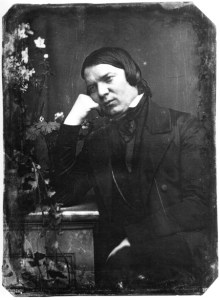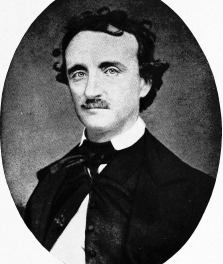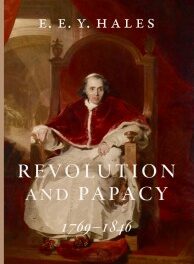We support our Publishers and Content Creators. You can view this story on their website by CLICKING HERE.
Composed in a matter of weeks in 1853, the Violin Concerto was Robert Schumann’s last major work before the madness set in.
 The program at the San Francisco Symphony was billed as “Mendelssohn’s Symphony No. 3 in A minor, with guest conductor Roberto Abbado.” Great, enjoyable stuff. But one glance at my playbill once I was seated gave me no doubt which piece on the program would outshine the rest for me: Schumann’s Violin Concerto in D minor. Composed in a matter of weeks in 1853, it was his last major work before the madness set in. I adore this rarely-played violin concerto.
The program at the San Francisco Symphony was billed as “Mendelssohn’s Symphony No. 3 in A minor, with guest conductor Roberto Abbado.” Great, enjoyable stuff. But one glance at my playbill once I was seated gave me no doubt which piece on the program would outshine the rest for me: Schumann’s Violin Concerto in D minor. Composed in a matter of weeks in 1853, it was his last major work before the madness set in. I adore this rarely-played violin concerto.
The concerto is enigmatic in a variety of ways. From its earliest days, it was dismissed as fatally flawed, the product of a declining mind. And not by the public but by Schumann’s closest associates. Violin virtuoso Joseph Joachim gave the score a run-through and privately expressed his concern to Clara Schumann and Johannes Brahms, who all agreed they’d be acting in Schumann’s best interests to stash the unpublished, unperformed concerto deep in a drawer. (By now he’d checked himself into an insane asylum where his mental state was in rapid decline.) Best to let it sit for 100 years before letting Schumann be judged harshly for what they perceived as weak writing.
Lest we now judge them harshly, it should be pointed out that it’s not a flawless work of music. It’s more orchestral than violin concerto-oriented. It’s difficult for the player, and yet, paradoxically, not terribly virtuosic, aside from the wide-ranging arpeggios better suited for a piano/pianist than a violin/violinist. The third movement repeats simple thematic passages far too many times. But I’ll argue that it’s still a charming, spirited movement. And nothing beats the concerto’s second movement with its aching beauty, imbued with something ephemeral, mystical.
Indeed, the concerto’s presence, its resurfacing back in the 1930’s is steeped in the mystical. Joachim’s great-niece, Jelly d’Arányi, herself a brilliant violinist, claimed to have learned about the concerto’s existence only through a séance and contact with the spirit of her great-uncle and/or Schumann himself. But that’s a story in itself.
Let’s return to 2017 and the San Francisco Symphony, where German violinist Veronika Eberle delivered a gorgeous, transcendent rendition of the concerto. Wow, the rich, evocative sounds she pulled from her instrument (the 1700 “Dragonetti” Stradivarius on loan from the Nippon Music Foundation.) I loved everything about Ms. Eberle’s performance, the way she articulated and emphasized certain notes so beautifully. The sound reminded me of birdsong, the way so many different colors and textures are revealed, coaxed out of the instrument (or the bird’s throat).
That’s what makes this concerto rather tricky, in my mind. If a violinist can’t conjure all those voices–querying, tremulous, plaintive, yearning, demanding–then the concerto becomes, as its critics will argue, meandering, repetitive, overly orchestrated.
Speaking of orchestras, I must share how much fun it is to watch this concerto being performed live when you’re used to only hearing a recording. Like the Beethoven Violin Concerto, Schumann’s work features a great deal of interplay with the orchestra throughout. It was fun to watch. I was able to observe and hear an intriguing dialogue between the soloist and the principal cellist (Michael Grebanier) in the second movement, that I’d never realized existed. It was so beautiful. The entire second movement was simply transcendent.
I so appreciate that the twenty-six-year old Eberle chose to perform this concerto for her debut with the San Francisco Symphony, in lieu of one of the better known works of the violin repertoire—the kind performed over and over and over: Tchaikovsky, Brahms, Mendelssohn, Beethoven, etc. Mind you, it’s not that I don’t love these concertos. It’s just that the Schumann Violin Concerto is uniquely lovely and needs to be championed. The audience didn’t give Ms. Eberle the rousing ovation she deserved, and I wonder if it was because they didn’t know what to make of this “quieter” or admittedly different concerto. She certainly deserved it, after pouring her heart, energy and considerable talent into it. I give her top marks across the board. And kudos to the musicians of the San Francisco Symphony and guest conductor Roberto Abbado. It takes a team effort to make it all come together.
I can’t share with you what I heard on that afternoon, of course, but here’s one of my favorite recordings of the Schumann Violin Concerto, performed by Gidon Kremer. Don’t miss out on the second movement; it starts at 15:30. It’s mystical.
Republished with gracious permission from The Classical Girl (May 2017).
This essay was first published here in November 2017.
The Imaginative Conservative applies the principle of appreciation to the discussion of culture and politics—we approach dialogue with magnanimity rather than with mere civility. Will you help us remain a refreshing oasis in the increasingly contentious arena of modern discourse? Please consider donating now.
The featured image is Robert Schumann in an 1850 daguerreotype. It is in the public domain, courtesy of Wikimedia Commons.
Share This Story, Choose Your Platform!
Go to Top

 Conservative
Conservative  Search
Search Trending
Trending Current News
Current News 






